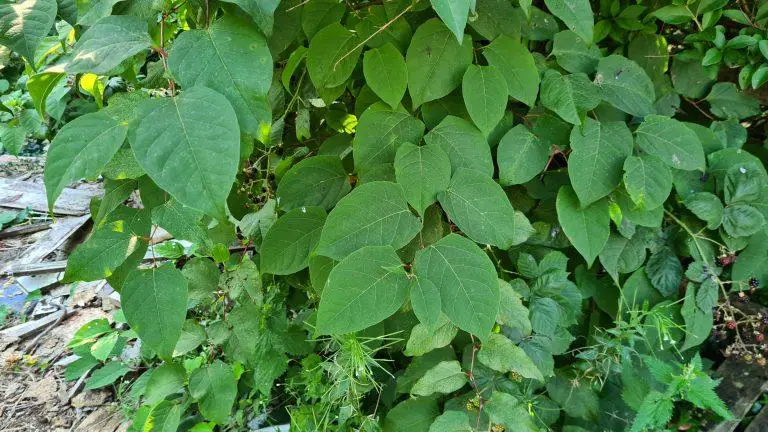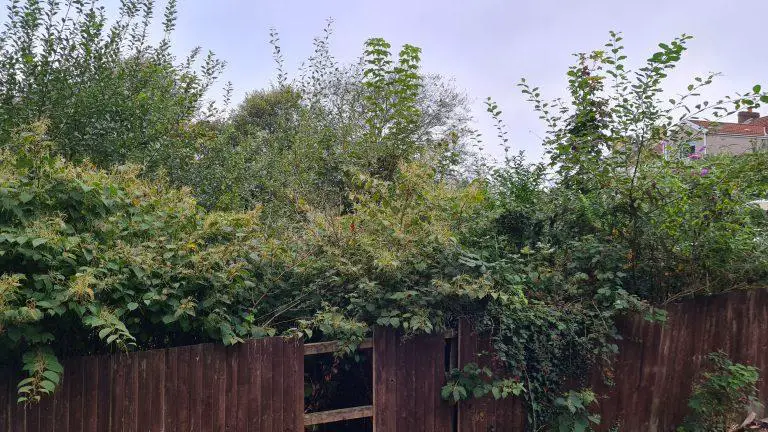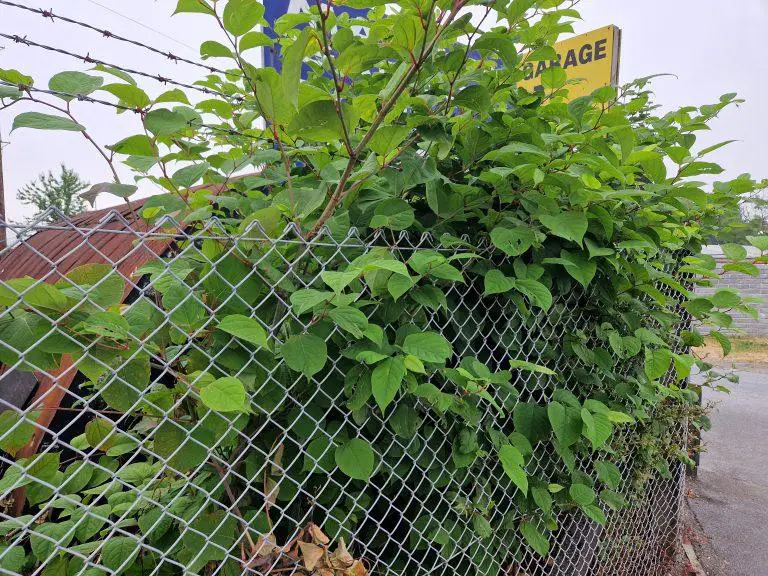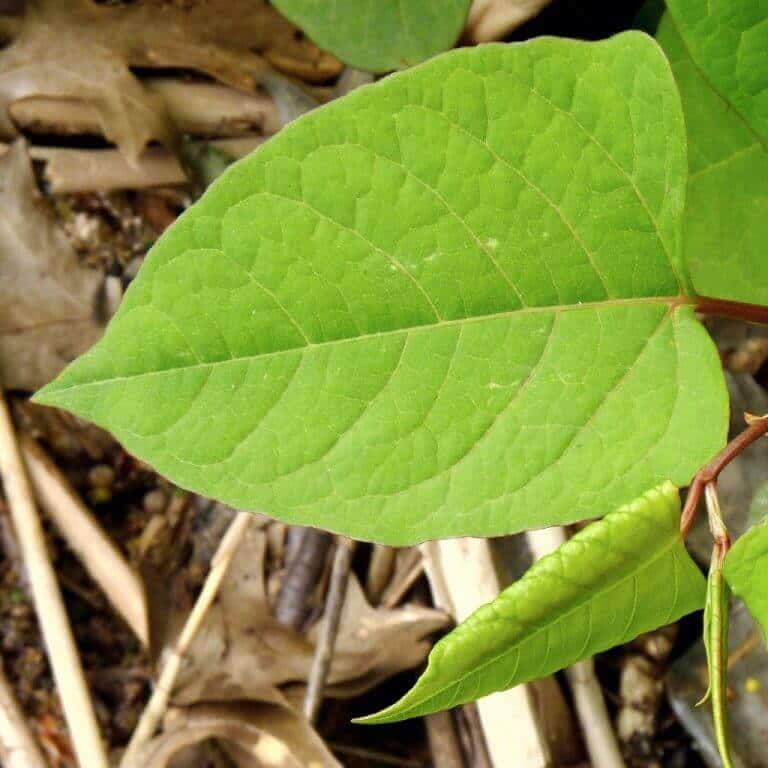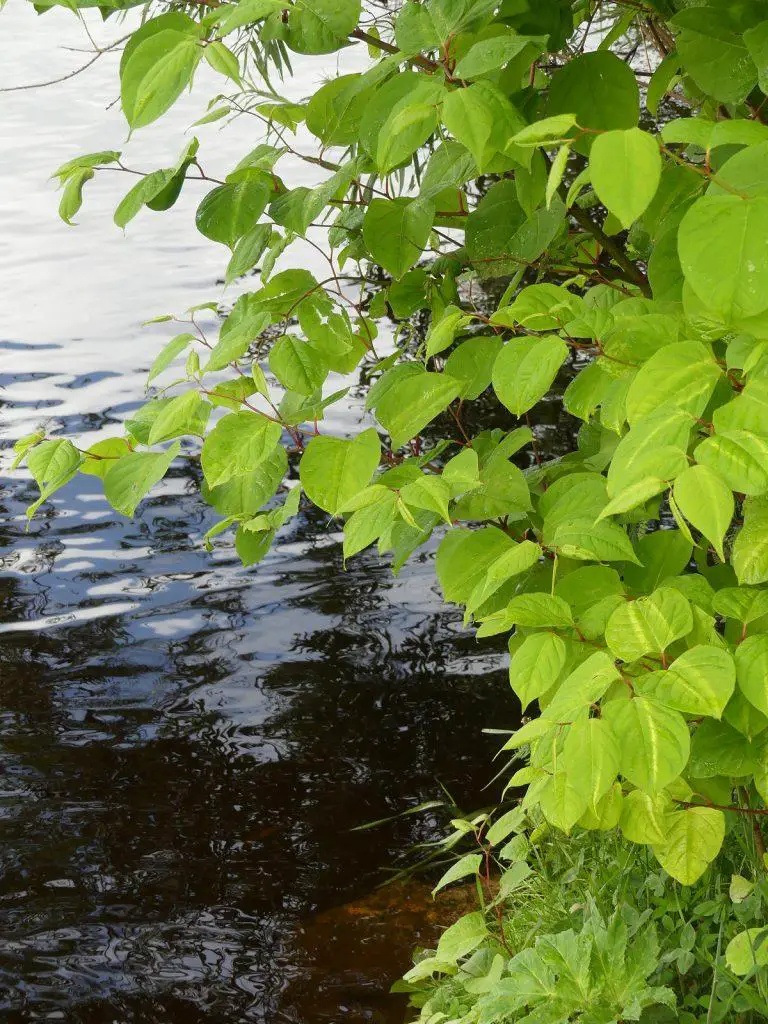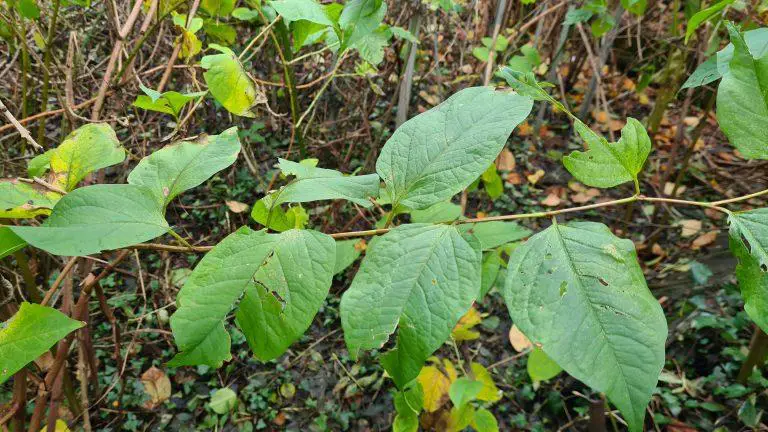Japanese knotweed is an invasive weed and, like other invasive plants, it is a non-native species that has been introduced to a new environment, either intentionally or accidentally.
Invasive plants like Japanese knotweed have the ability to spread rapidly and outcompete native species for resources such as water, light, and space.
As a result, they can disturb the delicate balance of an ecosystem, introducing diseases, altering soil chemistry, and creating monocultures that prevent other plant life from thriving.
Invasive plants are one of the leading causes of biodiversity loss worldwide, which is why it’s so important to know how to identify them in order to help protect our local habitats from destruction.
One such invasive species is Japanese Knotweed (Fallopia japonica), an extremely hardy perennial weed with a dense network of roots that can cause significant damage if left unchecked.
Overview of Japanese Knotweed and its history
Japanese Knotweed (Fallopia japonica) is an invasive species native to Eastern Asia that has been wreaking havoc on ecosystems around the world.
It was first introduced to Europe in the mid-19th century as an ornamental plant and since then it has spread rapidly, forming dense stands that can displace native vegetation and disrupt habitats.
Japanese knotweed grows quickly and can reach heights of up to 10 feet, making it difficult to control without professional help. Its extensive root system allows it to grow back from small fragments or cuttings, which makes eradication even more challenging.
The impacts of this weed are far-reaching, with potential consequences for agriculture, infrastructure and biodiversity across entire regions. Left unchecked, Japanese Knotweed could cause significant damage if not controlled properly.

Characteristics of Japanese Knotweed
Physical appearance
Japanese Knotweed (Fallopia japonica) is an incredibly invasive species of plant which has been wreaking havoc on ecosystems around the world since it was first introduced to Europe in the mid-19th century.
This perennial weed can quickly spread and outcompete native species for resources, disrupting delicate habitats and causing significant damage if left unchecked. Japanese knotweed is known for its hardy nature and extensive root system, allowing it to grow back from small fragments or cuttings making eradication even more challenging.
It’s important to be able to identify this plant so that we can help protect our local habitats from destruction by controlling its spread before it becomes too late.
Growth patterns and rate of spread
Japanese knotweed is a fast-growing perennial shrub which can reach heights of up to 10 feet. It has an extensive root system and thick stems with hollow, jointed nodes filled with white sap.
Japanese knotweed is known for its hardy nature and ability to spread quickly, forming dense stands that can displace native vegetation and disrupt habitats. Its rhizomes (underground stems) are capable of growing up to 3 meters in length and can grow through concrete, brick and tarmac, making it difficult to eradicate.
Spreading mostly through fragmentation and rhizome spread, Japanese knotweed can grow up to 9 inches in a single growing season.
Habitat preferences
The plant is typically found in moist areas such as riverbanks, gardens, parks, roadsides and railways. Its leaves are usually oval-shaped and dark green in colour, with a white underside.
The stems are reddish-green when young before turning brown as they mature into woody canes.
Reproduction and dispersal
Japanese knotweed reproduces through rhizomes (underground stems) which grow laterally underground and spread further than the above-ground growth of the plant. It also produces numerous small white flowers in the summer and fruits which contain seeds.
These can be spread by animals, water and even human activities such as excavation and soil disturbance. Japanese knotweed is incredibly hardy and can quickly form dense stands that displace native vegetation, making it important to identify this plant before it becomes too late.
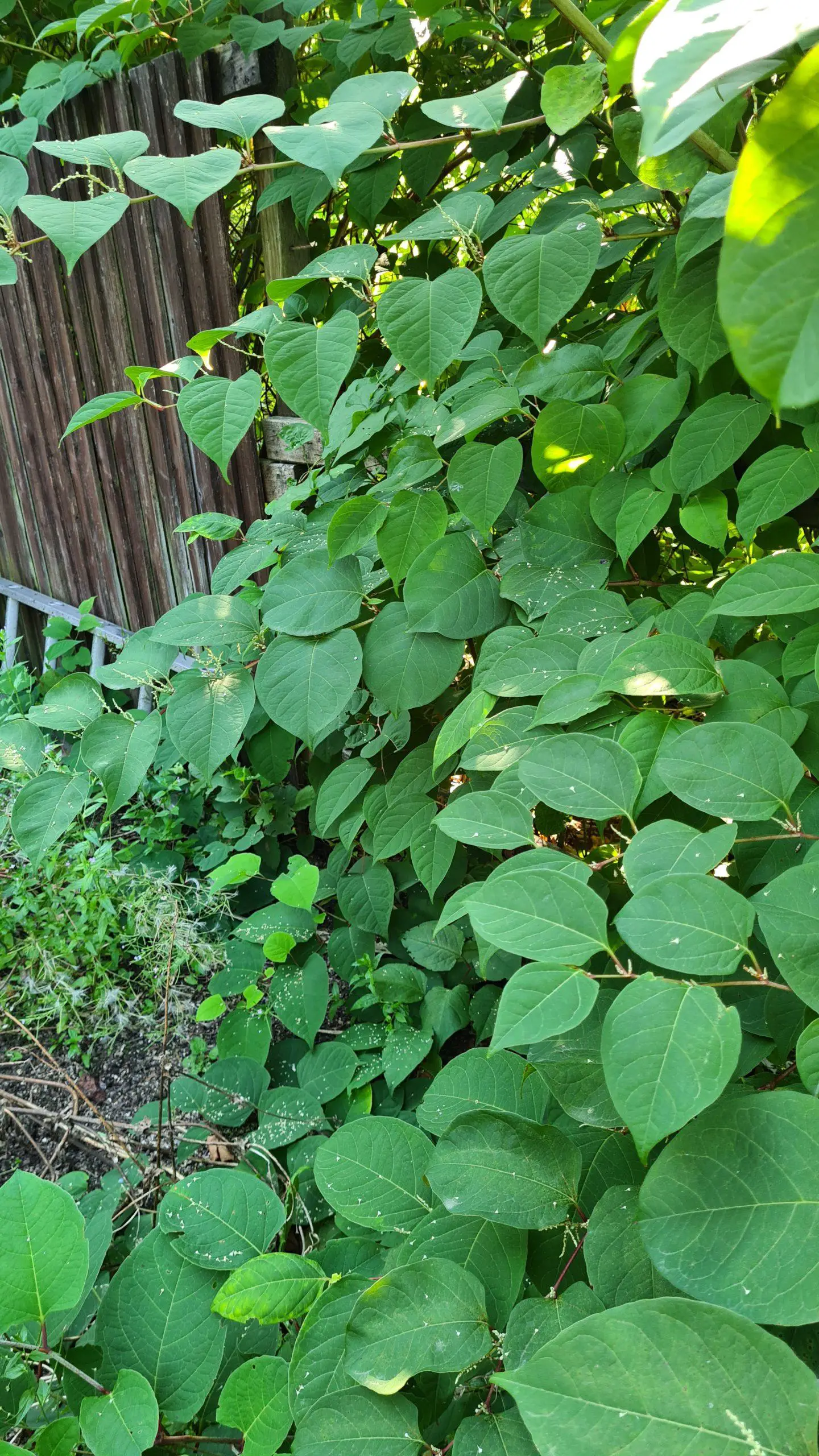
Ecological and economic impacts of Japanese Knotweed
Japanese Knotweed can spread rapidly, outcompeting native plants and forming dense thickets which can damage buildings and infrastructure.
As well as having environmental impacts, this also has significant economic implications – controlling Japanese Knotweed can be costly for landowners, local authorities and businesses alike.
Displacement of native plants
The weed poses a threat to native plants because it grows quickly and aggressively, out-competing other vegetation for resources such as light, water, and nutrients from the soil. It also shades out other plants by forming dense stands which prevent sunlight from reaching them.
The root systems are so strong that they can damage buildings and infrastructure when attempting to grow through cracks or joints in concrete or asphalt surfaces.
This damage caused by its roots also disrupts local ecosystems as well as causes economic harm due to costly repairs needed for damaged structures.
Damage to infrastructure and property values
Japanese knotweed is an invasive species that can severely damage infrastructure and overall property value. With its deep root systems and expansive growth, it can easily cause physical damage such as cracking and heaving of concrete, asphalt, and other hardscape materials.
It forces its way through cracks in walls, foundations, and driveways, potentially destabilizing them. Japanese knotweed is so pervasive that it can even invade underground infrastructure such as pipes, drains, and sewage systems.
Japanese knotweed also reduces the property values of homes and other buildings. It poses a risk to lenders when they are financing properties, leading them to reduce potential loan amounts or deny loans altogether if the problem persists. The presence of this weed deters potential buyers, and it is a liability to any property owner.
Furthermore, Japanese knotweed can be expensive and time-consuming to remove from a property, making it unappealing for buyers.
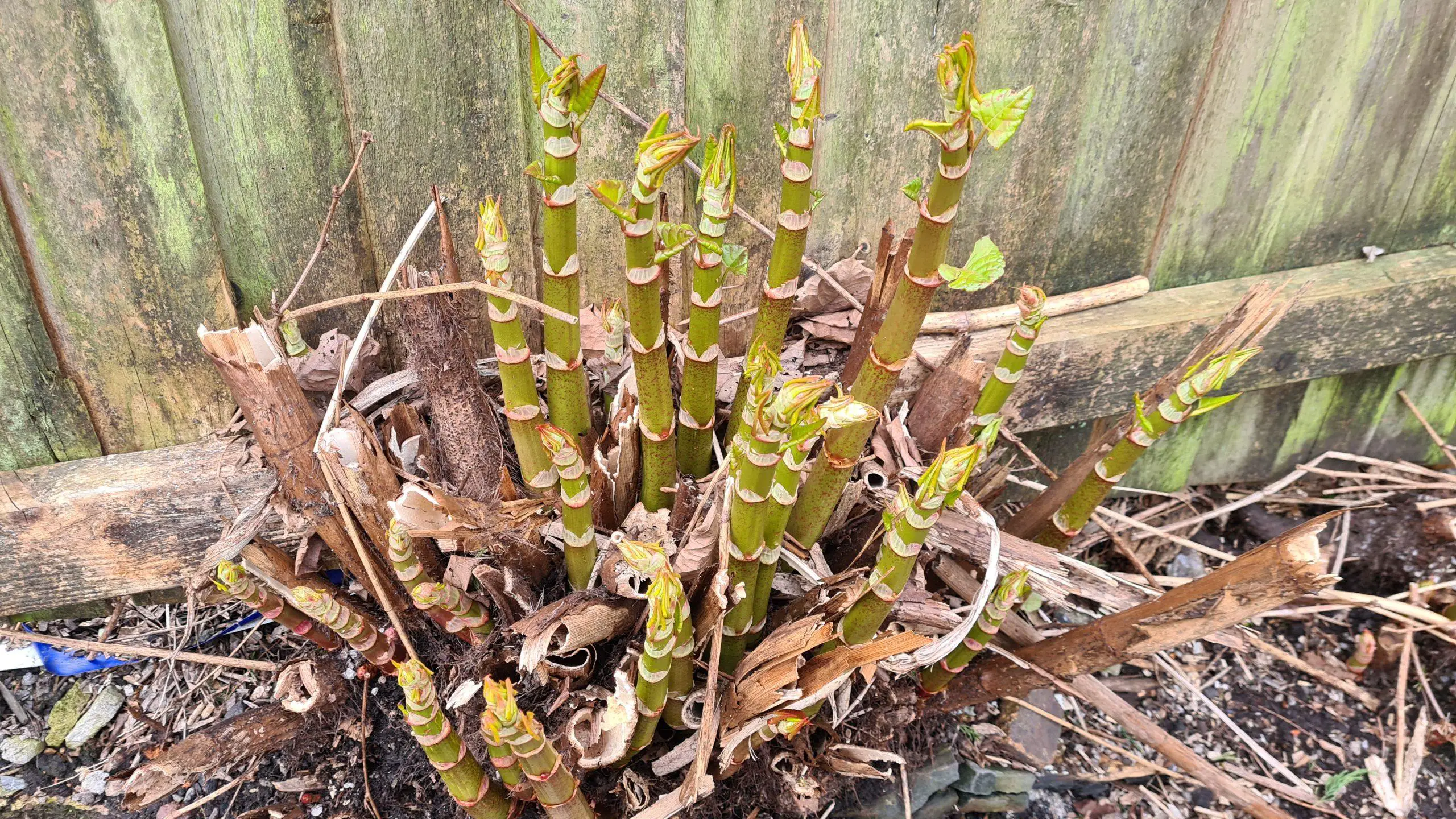
Effects on wildlife and ecosystem function
Japanese knotweed (Reynoutria japonica) is an invasive plant species that has been wreaking havoc on the local ecosystems in many parts of the world. The presence of this weed can reduce biodiversity, disrupt natural food webs, and cause long-term degradation of existing habitats.
In addition to reducing the diversity of native animal species, Japanese knotweed can also cause a decline in the population of native plants, leading to decreased availability of food sources for wildlife. The dominance of this species can alter hydrological processes, disrupt nutrient cycling, and reduce soil health.
Additionally, the presence of Japanese knotweed can create an environment that is unfavourable for many species due to its dense canopy, which can reduce light availability and limit the ability of other plants to grow.
Its underground rhizomes are capable of out-competing the root systems of surrounding vegetation, leading to a further reduction in species diversity and abundance.
All these factors combined have caused Japanese knotweed to be one of the most serious threats to wildlife and ecosystem function.
The effects of Japanese knotweed on wildlife and ecosystem function have been documented in numerous studies. In the UK, Japanese knotweed has been found to out-compete native plant species, resulting in a significant reduction in biodiversity.
Similarly, it has also been observed to displace the habitat of certain species such as the endangered Water Vole (Arvicola amphibious).
In addition, studies have also found that the presence of this weed can disrupt nutrient cycling, reduce soil health, and lead to altered hydrological processes. These effects can subsequently cause long-term degradation to local ecosystems, especially in areas where there is a large population of Japanese knotweed.
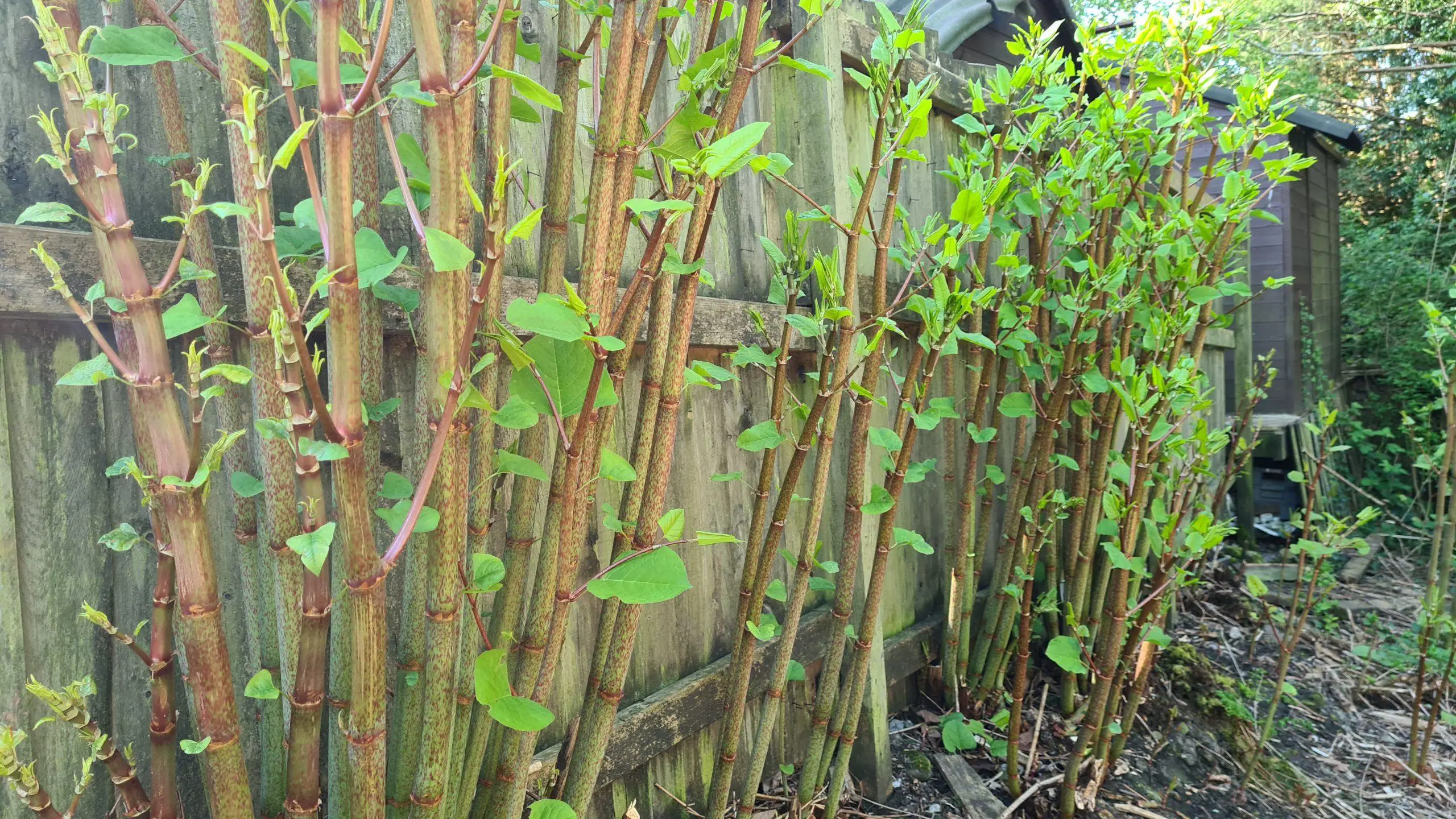
Control and management of Japanese Knotweed
Control and management of Japanese Knotweed require a multi-faceted approach that involves both mechanical removals as well as chemical treatment methods.
With careful planning and implementation of appropriate control measures, Japanese knotweed can be effectively managed to reduce its negative impacts on both natural habitats and human development projects.
Chemical and non-chemical control methods
Chemical control methods, such as the application of herbicides, are the most commonly used approach to Japanese knotweed control. Herbicides containing glyphosate or triclopyr can be applied directly to the foliage or via soil injection or foliar spray.
For large infestations, it may also be necessary to use a combination of chemical and non-chemical control methods.
Non-chemical control methods such as mowing, hand pulling and covering with impermeable membranes can all be used to reduce the spread of Japanese knotweed. However, these methods are not effective at killing the roots and rhizomes so they must be continued over an extended period of time to ensure successful eradication.
Mowing or cutting the foliage of Japanese knotweed should be done regularly to prevent flowering, as this can act as a source of seed dispersal. When hand-pulling plants it is important to ensure that all rhizomes and roots are removed from the ground.
This can be difficult and time-consuming, so it’s recommended to use a hand tool such as a spade or mattock to dig up the rhizomes and roots. Once removed, these should be disposed of in an appropriate manner (e.g. burning) to prevent re-infestation.
Covering large areas of knotweed with impermeable membranes can help to reduce spread but should not be relied upon as a sole control measure.
Best practices for eradication and prevention
Japanese knotweed is an invasive species that can cause significant disruption to native ecosystems. Its presence can reduce biodiversity, change the dynamics of local habitats, and even damage built structures.
Therefore, it is important to take preventative and eradication measures in order to protect the environment from its potential destruction.
One of the best ways to prevent and eradicate Japanese knotweed is to regularly monitor for the plant’s presence. Taking time each month, or even each week, to look for new growth can help stop the spread of this invasive species in its tracks.
If spotted, it is important to properly identify the plant as Japanese knotweed before attempting eradication because there are many varieties of plants that look similar.
When attempting to eradicate Japanese knotweed, it is essential to understand the different methods available. Physical removal of the plant is possible with a shovel or hoe, but this must be done very carefully as any small piece left in the ground can potentially regenerate new plants.
Chemical control through herbicides can also be effective but should be applied with caution and in accordance with local regulations.
Finally, it is important to create a plan for ongoing maintenance of the area after eradication. This might involve planting native species to improve biodiversity or using mulch to make it harder for Japanese knotweed to return. Regular inspections should also be conducted to ensure no new growth has occurred.
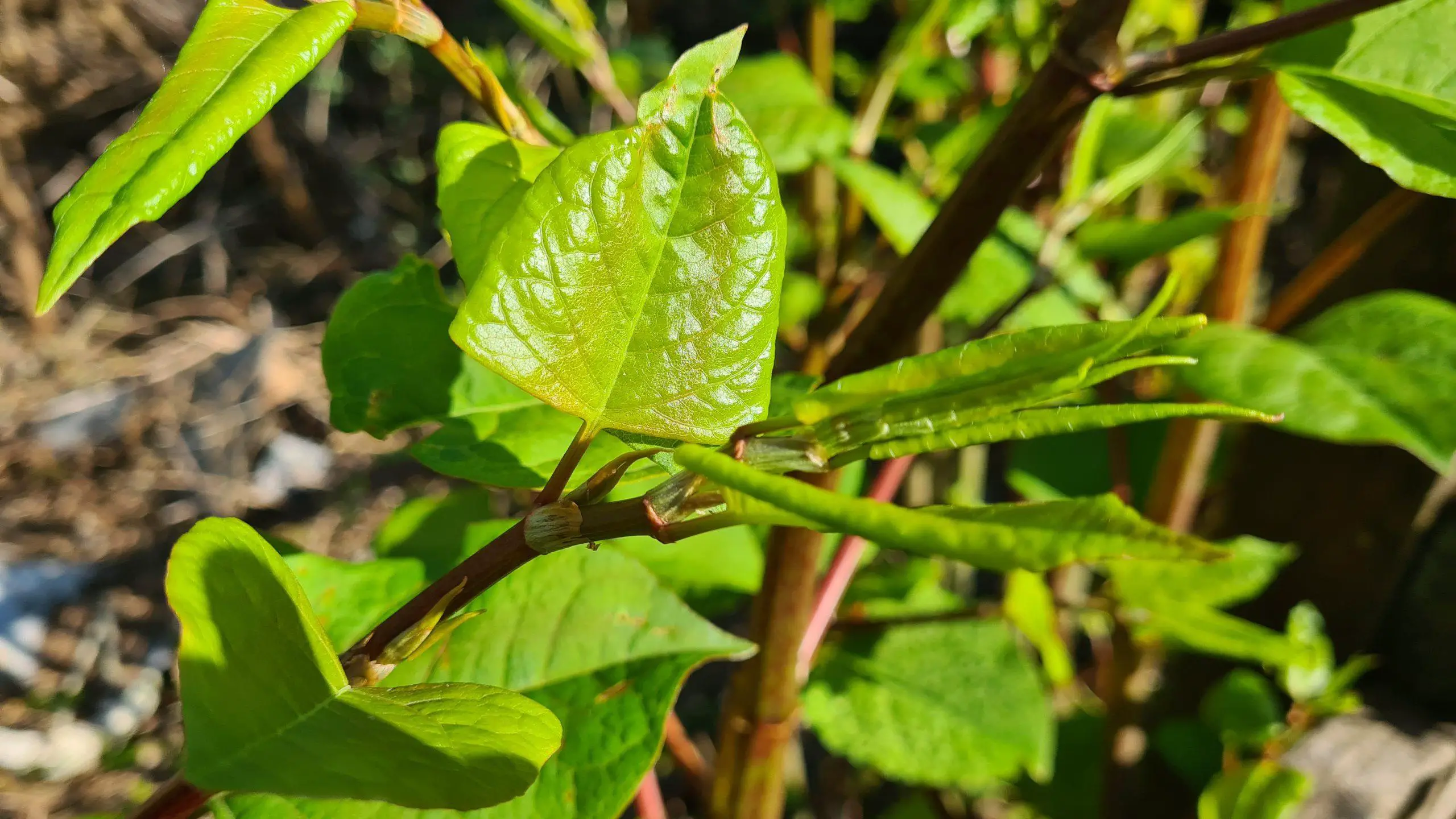
Regulations and legal considerations
Japanese knotweed is a highly invasive species that can cause extensive damage to residential and commercial properties, as well as the environment. In recent years, numerous regulations have been put in place to try and control its spread. As such, it is important for property owners to be aware of the current legal considerations pertaining to Japanese knotweed so they can take appropriate action if necessary.
Specifically, these include:
- The Wildlife and Countryside Act 1981 (as amended) makes it an offence for any person intentionally or recklessly plant or otherwise cause Japanese Knotweed to grow in the wild
- The Environmental Protection Act 1990
- The Plant Health Order 2006
- Various other local authority by-laws.
It is also important for people buying or selling property with evidence of Japanese knotweed on site to understand their rights under the law when dealing with this situation. If you have questions about any of these regulations, it is best to consult a qualified solicitor.
Taking the necessary steps to tackle Japanese knotweed early on can help to prevent costly repair bills in the future and keep your property safe from this invasive species.
Furthermore, it is also recommended to seek professional help when dealing with Japanese knotweed. Professional teams can provide an effective and safe management plan for the removal of this plant from your property.
Certified contractors should be hired to ensure that any infestations are treated in compliance with all necessary regulations and laws. It is also a good idea to engage a surveyor to inspect your property and assess the level of damage caused by Japanese knotweed, as well as any legal implications that may arise.
A professional team can also provide advice on how best to protect your property from future infestations. Taking these steps is essential in order to keep your property secure and free from Japanese knotweed.
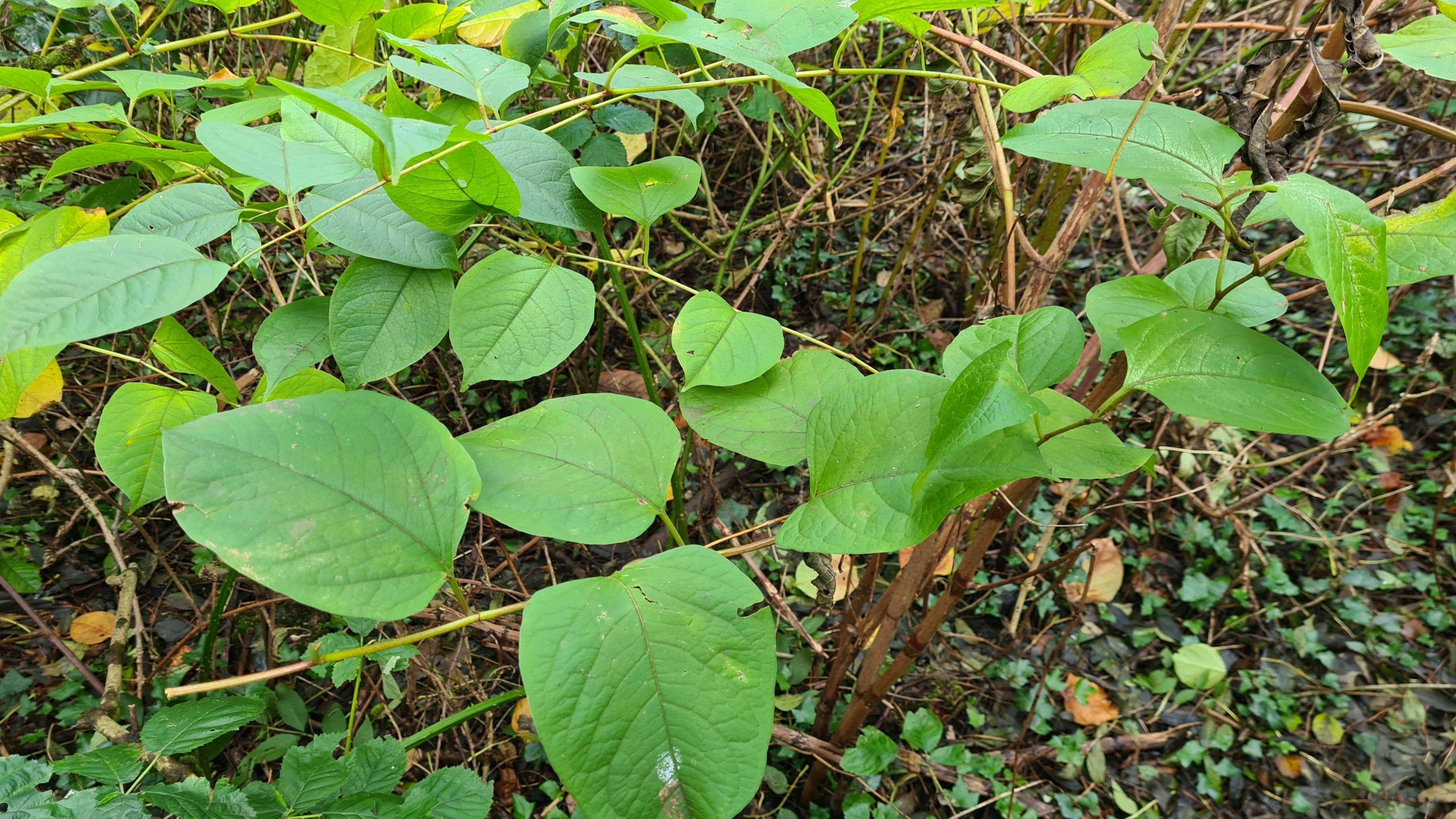
Debates and controversies surrounding Japanese Knotweed
It is a highly adaptable species which can grow in any habitat and its deep roots make it hard to eradicate without specialized treatments. As such, debates and controversies surrounding Japanese Knotweed have been growing over recent years with experts disagreeing on how best to deal with this problematic weed.
On one hand, some experts argue that the best way to deal with Japanese Knotweed is through herbicides and other chemical treatments. When applied correctly, these can be effective in killing or suppressing the weed’s growth and preventing its spread. However, this approach has been criticised due to its potential environmental impacts on non-target species and water sources.
On the other hand, some experts argue that the physical removal of the weed is a better solution. This method involves digging up the root system and disposing of it in an approved waste site or burning it on-site.
Although this approach is more labour-intensive and costly, proponents argue that it is more effective in stopping the spread of Japanese Knotweed and does not pose any environmental risks.
Ultimately, it is clear that there is no single solution to the issue of Japanese Knotweed and further research and debate are needed in order to come up with a plan that best combats this invasive species.
In the meantime, it is important for homeowners and local authorities to be aware of the risks posed by Japanese Knotweed and to act quickly if it is sighted on their property.
Effective management measures such as regular monitoring, early detection and rapid response are essential for preventing its spread.
No matter what method of control is chosen, it is important for Japanese Knotweed to be managed correctly in order to help limit its spread and damage to the environment. If you believe that there is Japanese Knotweed on your property, it is vital to take action quickly and contact a qualified professional for advice and assistance.
In conclusion
In conclusion, Japanese knotweed is an incredibly invasive weed that can cause significant damage to the environment and infrastructure. It has been known to spread rapidly and outcompete native plant species for resources.
As such, it’s important for homeowners, farmers, and land managers alike to be aware of this weed so they can take appropriate steps to contain its growth before it becomes a larger problem in their area.
With proper identification techniques, management strategies, and early action plans in place, we can work together towards eradicating Japanese Knotweed from our lands.

